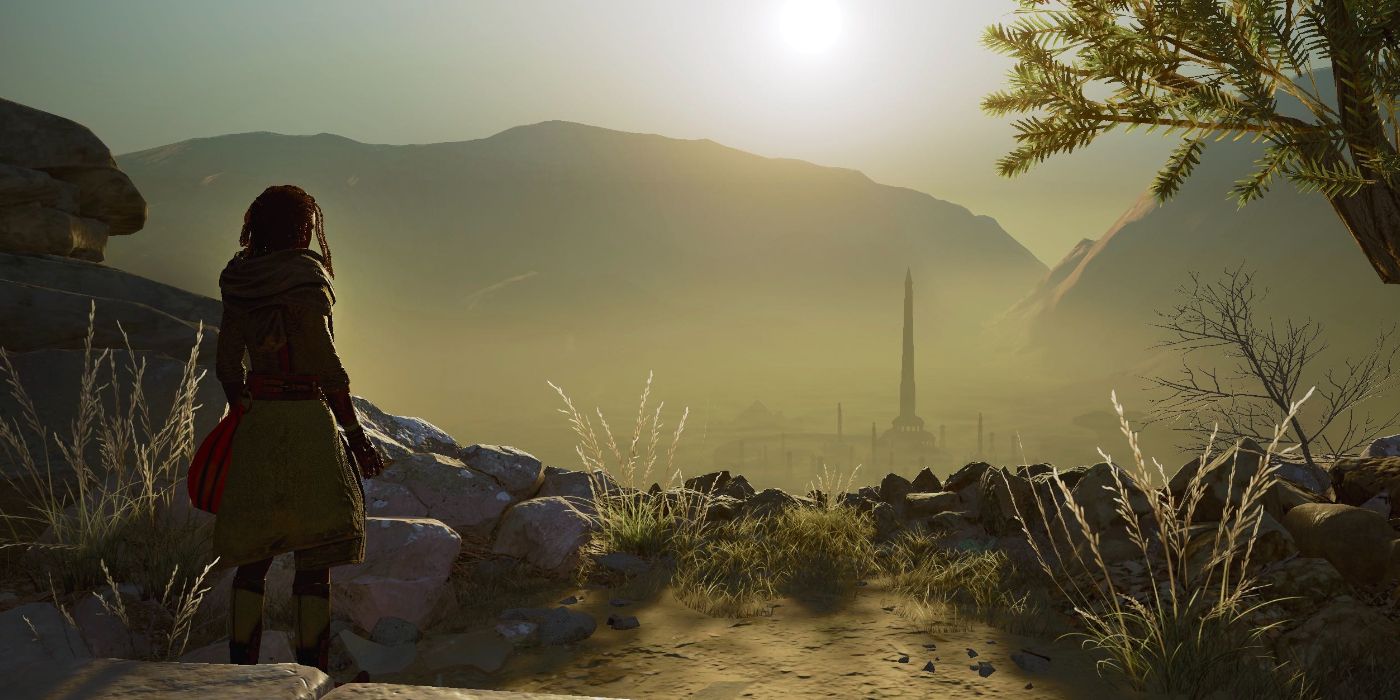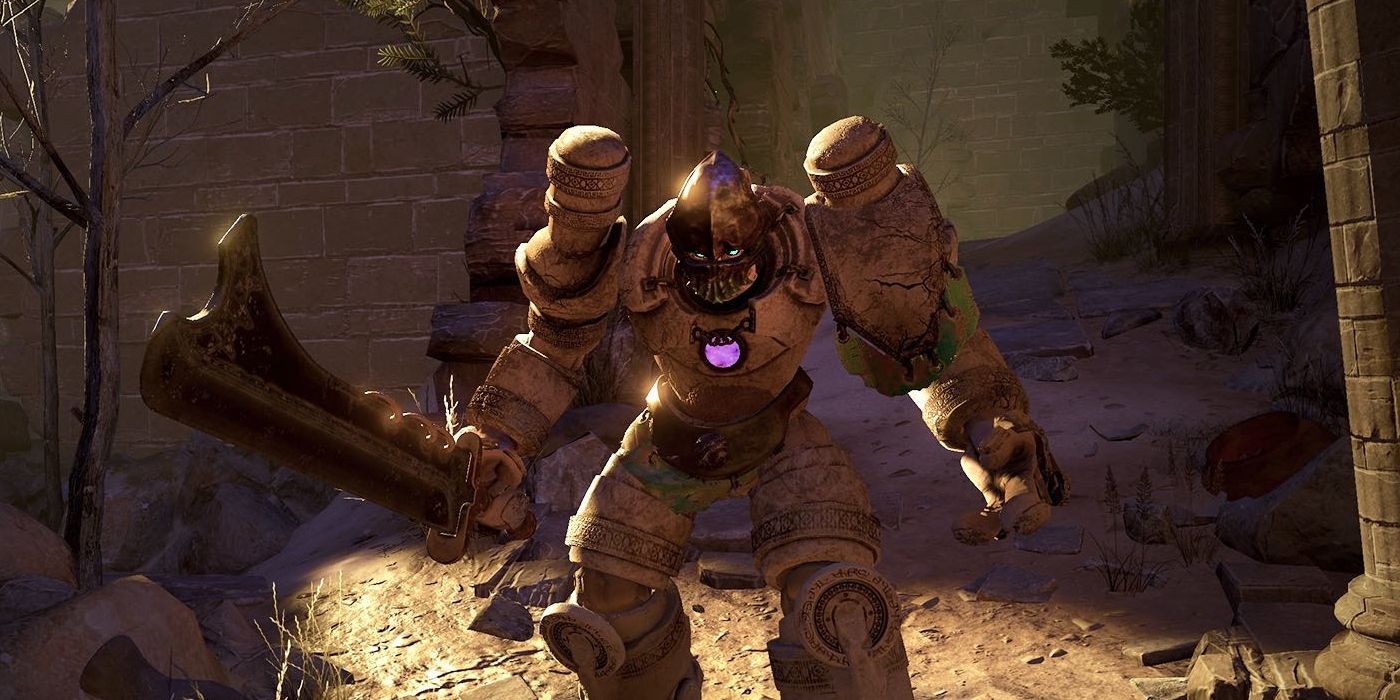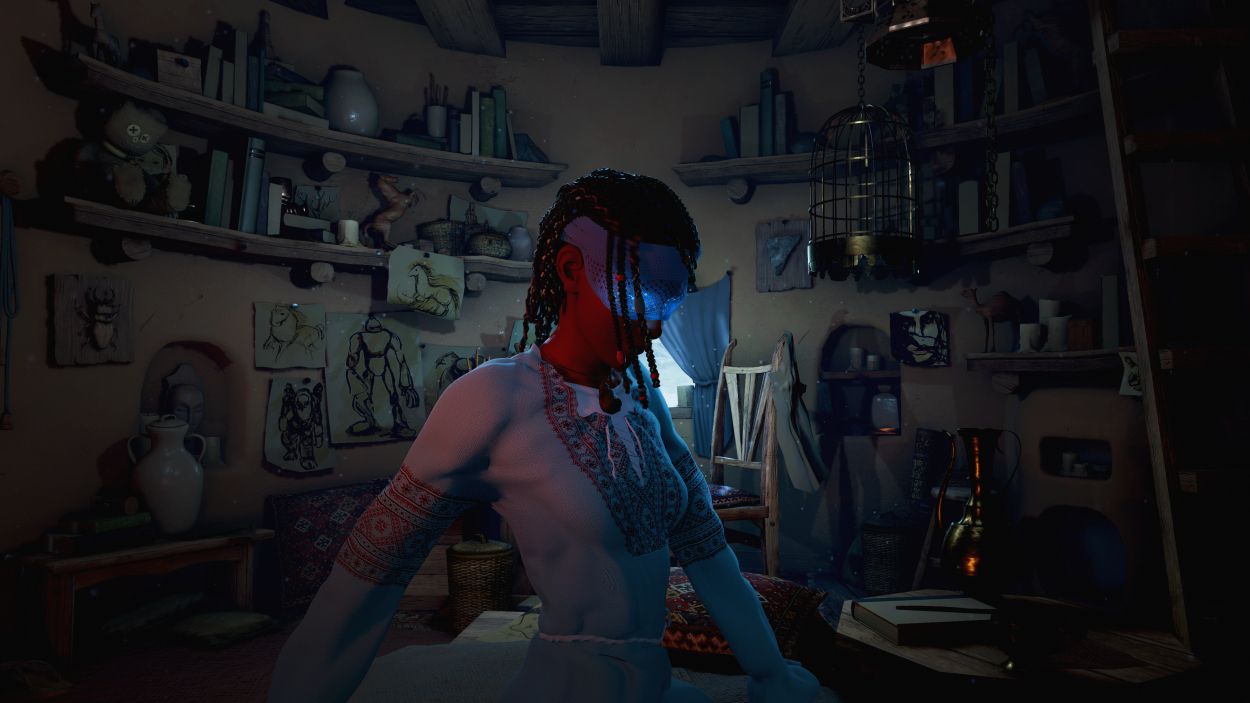Golem‘s crunchy combat, strong narrative, and enticing score are some of the best PS VR has to offer, but nausea risks compromising the full package.
The long-delayed PS VR game Golem feels like a classic on paper: a tragic intro with well-voiced characters, a beautiful and unique run-down fantasy world, and a front-loaded promise of action and exploration. As a VR game, though, it sometimes struggles to hold this bundle of good intentions together with some potentially nauseating navigation. For players who can figure out the best control methods that work for them and the patience required to fully immerse themselves into the experience, there is a considerable amount of value to be had here, but its a premium-priced game to test the VR waters with.
Twine is a young girl in a ramshackle city protected by a magical spherical invisible barrier—inanimate objects can pass through but organic matter cannot come in or out. Much of the city revolves around a scavenger economy and Twine’s family is no different, with her father selling whatever cups and debris he finds in the nearby ruins. Twine’s sister, however, secretly uses a magical artifact left behind by their departed mother, and early scenes reveal how this artifact can be used to control mechanized golems. Since the golems are essentially inanimate she can use them to penetrate the barrier and seek more valuable treasures in far-out ruins.
In case you mistakenly believe that the game involves staring at your sister control these golems, think again. Tragedy strikes and you are quickly injured and bed-ridden, but not before obtaining that same artifact, which then guides the rest of the adventure. While sitting in her bedroom, Twine can first command a simple straw doll before uncovering a golem workshop, and you’re soon ready and equipped to get your avatar out into the field.

Maybe “soon” isn’t quite right. “Eventually” is more accurate. Golem’s first hour is a bit of a slog, with no less than five discrete non-interactive narrative sequences spent seated while characters gesture and engage you with exposition and plot. To its credit, the voice-acting, animation, and writing quality are all strong points, and Golem’s high concept certainly requires much more than a text scroll. The sequence where you control that straw doll will probably split the game’s audience; it’s well-crafted but incredibly slow-paced, and methodically crawling through underground tunnels filled with dozens of what-looks-like bedbugs is indisputably disturbing (they scamper and skitter on top of your doll to halt its progress, which feels even more alarming seen in VR).
Once you’re well past the intro, though, Golem’s primary mechanics are much more palatable. Your avatar machine has a great feeling of weight, with a huge chunky sword and even moving feet and legs which can be seen when turned your face to the ground—not enough FPS and/or VR games have this lauded feature, and it’s sensible to this game’s concept. As the golem you’ll traverse ruins for weapons, items, and special dream crystals which impart narrative and gameplay tips from your mother, all of which are strongly voiced and always worth seeking out. You’ll also run into some cannon-fodder mobs and enemy golems, the latter of whom need to be dispatched in careful one-on-one combat, somewhat reminiscent of Epic’s mobile hit Infinity Blade.

Let’s parse through these mechanics, though, because each of them require analysis and consideration. Movement, to start with, is a strange beast, with the default control scheme requiring players to lean forward in their chair (there’s an emphasis here on seated play) while holding the trigger button. It can take a while to realize exactly what it’s asking you to do, and leaning forward too far prompts an on-screen alert to lean back slightly. In our experience, moving forward works best by sitting in a swivel chair, reclining back slightly, holding the trigger button, then straightening the seat, a method which grants a kind of horseback-riding gallop to navigation. If your seat is completely stationary, leaning forward with the weight of the PS VR headset can’t help but feel unwieldy, and can even potentially exacerbate lower back problems.
It’s quite odd that the developers chose this as the default method of locomotion, and while certain inclusions like an office chair make it slightly easier to deal with, we presume that many players will pop off to the options menu to suss out other available systems. Sadly, none of these work precisely right, and a stick-control option using the DualShock 4 in your left hand somehow makes it even worse. Comfort options are hard to make sense out of, but seemingly determine how much of a tunnel-vision effect occurs when moving with the trigger button pressed, vignetting the level with an always-constant view of Twine’s bedroom.
If it isn’t clear, mixing and matching the control features never completely eradicate one key fault in Golem: VR-induced nausea and motion sickness. As a reviewer of quite a number of VR titles, this isn’t a frequently broached subject, which should tell you how concerned about that factor you should be if purchasing the game. Extended gameplay sessions required much-needed breaks and lingering uneasiness afterward. It’s not necessarily a deal-breaker (taking frequent breaks from VR play is a good idea, anyway), but something about the movement controls and camera turns Golem into a motion-sickness risk for certain individuals, and they should be fully aware of that risk before plunking down their money.

All that being said, there are sufficient rewards to be had for players with the right sensibility and expectations. A combination of the otherworldly splendor of Fumito Ueda’s games (Ico, Shadow of the Colossus, The Last Guardian) and the challenging risk/reward aspects of the Soulsborne series blend marvelously when Golem’s inner workings snap together. Losing a duel in the game means a loss of your health gem, equipped weapon, and mask, all of which are important components to furthering progress, so failing in combat can lead to some setbacks. However, the finely tuned challenge makes this feel reasonable, and you’ll be entering battles with better preparation and skill as you learn the nuances and expectations for blocking and attacking, fight by fight—an important and unique aspect for a largely skill-based game with no experience points to speak of.
Beyond that is the absolutely stellar audio. Aside from the aforementioned top-shelf voice-acting, the original soundtrack is gorgeous, ranging from battle-ready drums to moving compositions and hummable melodies. Halo and Destiny’s lauded composer Martin O’Donnell has definitely pulled out all the stops, creating aural atmospheres that alternate between heart-swelling intimacy and inspiring fuel for the clanging combat. Furthermore, Golem’s environments respond audibly to your avatar’s weaponry and footsteps, small but notable touches which pull you deeper into its ruined world.
It’s a lengthy game for this platform, also padded by the slow gait of the lumbering automaton. This serves to communicate the weight of the character but still feels like something which artificially lengthens the seven or eight hours needed to finish the story. So long as you can tolerate any remnant dizziness, it’s probable that anybody spellbound by the first two hours will have to see that story through, and they’ll find a substantive experience that feels larger and richer than most other VR fantasy titles. Golem is the kind of game that could definitely use a demo, so people could first test its movement particulars and see if the overall feel is digestible or not. Despite that, it’s still highly recommended for those wanting to discover a unique PS VR game that pushes the promise of the tech.
Golem is available on PlayStation VR. A digital copy was provided to Screen Rant for purposes of review.




